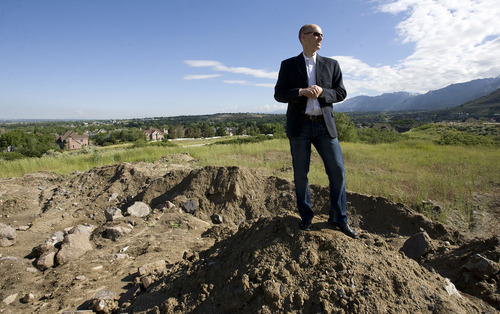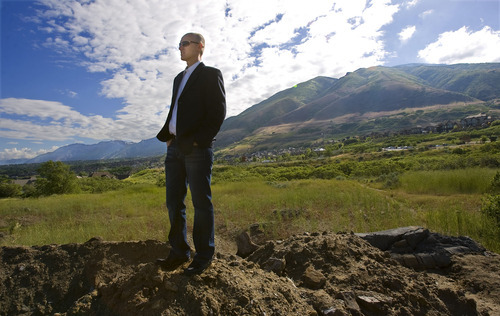This is an archived article that was published on sltrib.com in 2011, and information in the article may be outdated. It is provided only for personal research purposes and may not be reprinted.
Draper's ambitious dream to build an outdoor bicycling arena at the mouth of Corner Canyon may be gradually turning into reality.
The City Council has voted to donate 5 acres, a site plan has been developed and marketing materials have been assembled.
All that remains is the biggest hurdle: raising $1.5 million in pledges to build the arena — known in the cycling world as a velodrome.
"I think it's very doable," said Jeff Stenquist, a council member and, for two decades, a bicyclist.
"I don't think that we are overreaching. We just need to get support from community donations," Stenquist said.
A velodrome is an oval racing track with steeply banked corners around which cyclists race at speeds of more than 30 mph. Although about 800 velodromes exist in the world, fewer than 25 are in the United States. None are in Utah, although the sports-besotted city of Ogden is trying to build an oval of its own.
The closest outdoor racing track is in Colorado Springs, Colo.; an indoor velodrome, which is what Ogden hopes to build, is in Boulder, Colo.
"The council all along has had some considerable amount of interest in it," Draper Mayor Darrell Smith said. "The main reason is, it's just a good fit for our community, and what we are hearing from the cycling world is the elevation is conducive to this type of sport."
Stenquist said the site is about 4,600 feet above sea level and 300 feet above the floor of the Salt Lake Valley, providing a jaw-dropping view. At that elevation, the atmosphere is thin enough to offer less aerodynamic resistance to racers than the air at lower-elevation sites. Yet the altitude isn't so high that the air becomes a factor limiting aerobic exercise.
"So it's a great location for breaking [speed] records," said Stenquist.
Indoor velodrome surfaces are made of wood. Because Draper's arena will be outdoors, the surface may be concrete or asphalt, although an architect is recommending metal rails. They would be cheaper to maintain and provide a faster track.
"It would be the first in the world. If we did that, potentially it could be, in combination with the altitude, one of the fastest tracks in the world," Stenquist said.
Anticipating the velodrome will also draw spectators, city officials have penciled in bleachers and grassy embankments for people to watch racers whiz by on special bikes with no brakes and just one gear. Other track-cycling venues attract as many as 100,000 visitors a year, according to city officials.
"We think it's going to be very popular from the city's standpoint and also the standpoint of the county and state," Stenquist said. "It will be able to draw in people, not just from the state but elsewhere. It can host national and even international events."
Smith views the velodrome as an asset that should diversify Draper's economy. He thinks the arena will attract restaurants, even hotels.
"Everything about this location is almost like it was made for this," the mayor said.
pbeebe@sltrib.com Twitter: @SLTribPaul —
Draper's velodrome
The arena likely will be 250 meters long with steeply banked oval bends connected by two straightaways. It may be extended to 333 meters so that the bends are not so steep.
The track may be asphalt or concrete, although an architect is recommending metal rails, which reportedly would be the first in the world.
The arena will be built near an existing equestrian center.
Eventually, Draper hopes to build a criterium course, a cyclocross course and an in-line skating facility near the velodrome.
A small mountain-bike park will be built this summer on the site's east side.





